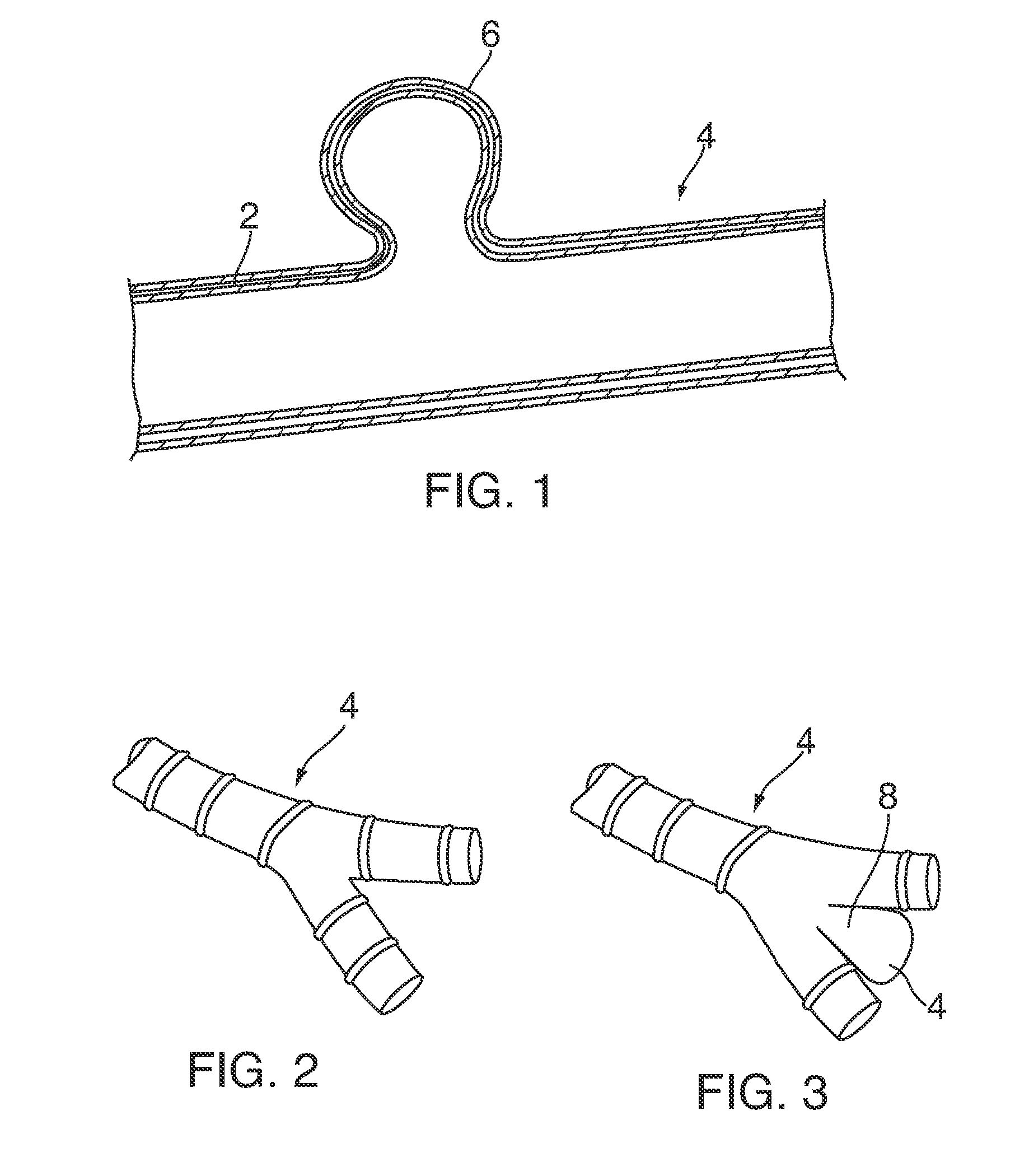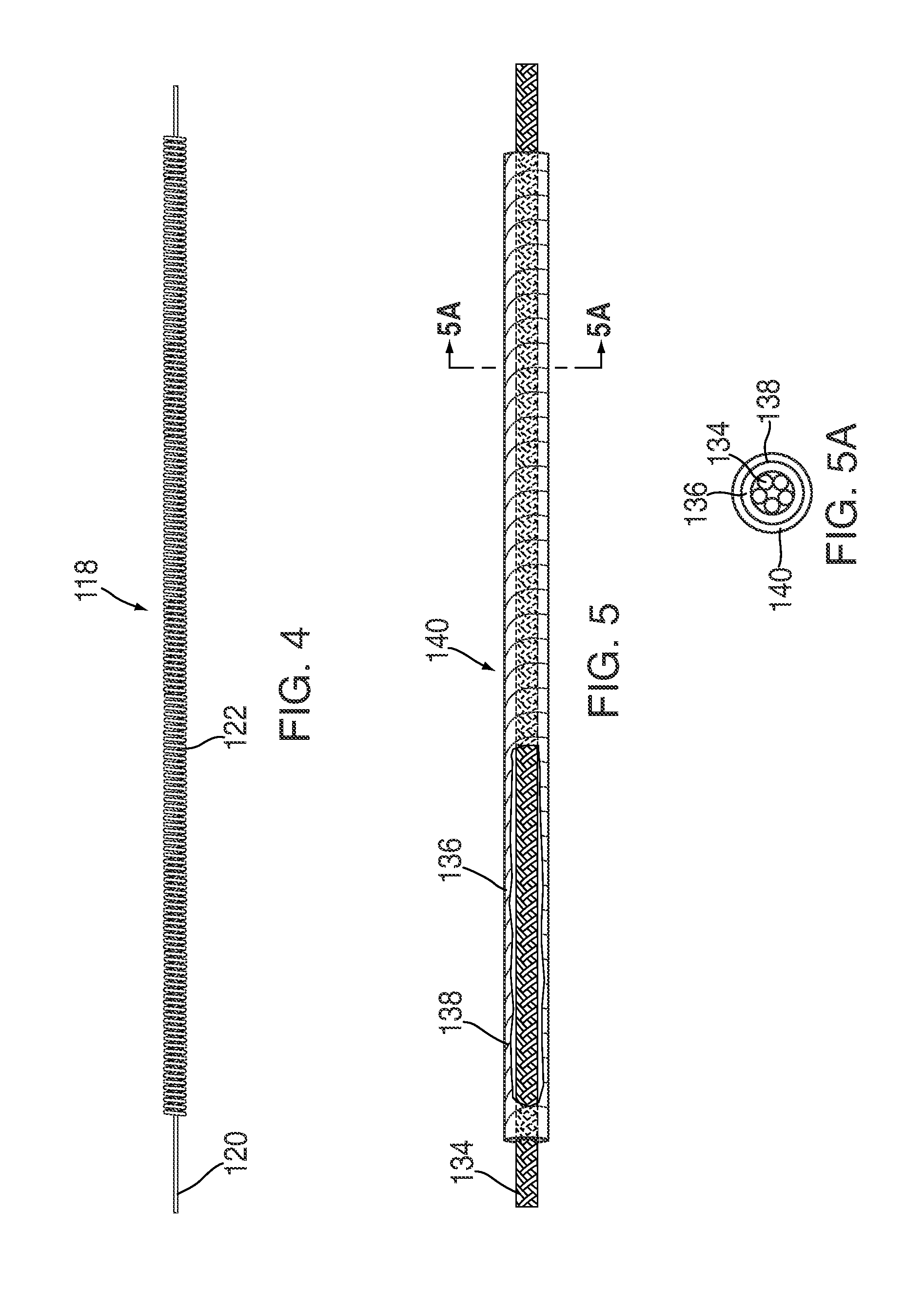Vascular occlusion devices and methods
a technology of vascular occlusion and occlusion chamber, which is applied in the direction of prosthesis, paper/cardboard containers, drug compositions, etc., can solve the problems of recanalization or device migration of aneurysms, and affecting the healing effect of aneurysms
- Summary
- Abstract
- Description
- Claims
- Application Information
AI Technical Summary
Benefits of technology
Problems solved by technology
Method used
Image
Examples
example 1
Fabrication of a Cross-linked Reticulated Polyurethane Matrix
[0428]The aromatic isocyanate RUBINATE 9258 (from Huntsman) was used as the isocyanate component. RUBINATE 9258, which is a liquid at 25° C., contains 4,4′-MDI and 2,4′-MDI and has an isocyanate functionality of about 2.33. A diol, poly(1,6-hexanecarbonate)diol (POLY-CD CD220 from Arch Chemicals) with a molecular weight of about 2,000 Daltons was used as the polyol component and was a solid at 25° C. Distilled water was used as the blowing agent. The blowing catalyst used was the tertiary amine triethylenediamine (33% in dipropylene glycol; DABCO 33LV from Air Products). A silicone-based surfactant was used (TEGOSTAB® BF 2370 from Goldschmidt). A cell-opener was used (ORTEGOL® 501 from Goldschmidt). The viscosity modifier propylene carbonate (from Sigma-Aldrich) was present to reduce the viscosity. The proportions of the components that were used are set forth in the following table:
TABLE 2IngredientParts by WeightPolyol C...
example 2
Reticulation of a Cross-Linked Polyurethane Foam
[0437]Reticulation of the foam described in Example 1 was carried out by the following procedure: A block of foam measuring approximately 15.25 cm×15.25 cm×7.6 cm (6 in.×6 in.×3 in.) was placed into a pressure chamber, the doors of the chamber were closed, and an airtight seal to the surrounding atmosphere was maintained. The pressure within the chamber was reduced to below about 100 millitorr by evacuation for at least about two minutes to remove substantially all of the air in the foam. A mixture of hydrogen and oxygen gas, present at a ratio sufficient to support combustion, was charged into the chamber over a period of at least about three minutes. The gas in the chamber was then ignited by a spark plug. The ignition exploded the gas mixture within the foam. The explosion was believed to have at least partially removed many of the cell walls between adjoining pores, thereby forming a reticulated elastomeric matrix structure.
[0438]T...
example 3
Fabrication of a Cross-Linked Reticulated Polyurethane Matrix
[0445]A cross-linked Polyurethane Matrix was made using similar starting materials and following procedures similar to the one described in Example 1. The starting ingredients were same except for the following. The aromatic isocyanate Mondur MRS-20 (from Bayer AG) was used as the isocyanate component. Mondur MRS-20 (from Bayer AG), which is a liquid at 25° C., contains 4,4′-MDI and 2,4′-MDI and has an isocyanate functionality of about 2.3. Glycerol or Glycerin 99.7% USP / EP (from Dow Chemicals) was used as a cross-linker and 1,4-Butanediol (from BASF Chemical) was used as chain extender. The cross-linker and the chain extender are mixed into system B. The proportions of the components that were used are set forth in the following table:
TABLE 4IngredientParts by WeightPolyCD ™CD220(g)100Propylene carbonate (g)5.80Tegostab BF-2370 (g)1.50Ortegol 501 (g)2.00Mondur MRS-20 (g)51.32Isocyanate index1.0Distiled water) (g)1.89Glyce...
PUM
| Property | Measurement | Unit |
|---|---|---|
| interior angles | aaaaa | aaaaa |
| interior angle | aaaaa | aaaaa |
| length | aaaaa | aaaaa |
Abstract
Description
Claims
Application Information
 Login to View More
Login to View More - R&D
- Intellectual Property
- Life Sciences
- Materials
- Tech Scout
- Unparalleled Data Quality
- Higher Quality Content
- 60% Fewer Hallucinations
Browse by: Latest US Patents, China's latest patents, Technical Efficacy Thesaurus, Application Domain, Technology Topic, Popular Technical Reports.
© 2025 PatSnap. All rights reserved.Legal|Privacy policy|Modern Slavery Act Transparency Statement|Sitemap|About US| Contact US: help@patsnap.com



